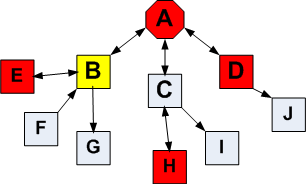What does social network analytics mean in the telecom space? Is it Twitter? Facebook? LinkedIn? Maybe, but the real power of social network analytics lies in the data the telecom companies record and process every minute of every day; Voice and SMS records. The social networks that exist within your subscriber base is incredible rich with information that can tell you anything from what movie they might want to watch next to who is getting ready to churn away to a competitor.
This information has been available for as long as telephones have been around. But only in the past few years with the explosion of computer and cloud power has it been possible to truly aggregate the data and turn it into meaningful and actionable information. Similarly, the idea of a social network has been around since the beginning of time. People’s social networks include friends, family, and co-workers who can influence them and whom they can influence as well. The strength of the connections can be measured by analyzing the data to identify those individuals within a social circle who have the power to influence others one way or another.

The illustration on the right is an example of the social network of Customer “A” who has recently churned. A social network analysis shows that 3 other customers within their social circle (“D”, “E”, “H”) have since churned. ATS churn prediction module has identified customer “B” as being at high risk of churning in the next 30-60 days.
When you combine social network data with other available sources such as repair calls, demographics, among others, only then can you find the real value within the seemingly abyss of data. When you can up-sell a customer to the next data package because you can predict that they will surpass their limit in the next 60-90 days, that’s when you are using your data as a true resource. When you can save a customer from churning by offering him 6 free months of HBO because you know that all his friends are big fans of Game of Thrones, that’s when you know you are truly harnessing the power of the data. When you can stop fraud before it happens by linking known fraudsters together (Yes, as it turns out, people who commit fraud are more likely to be friends with other people who commit fraud), that’s when you have a real impact on the bottom line.
